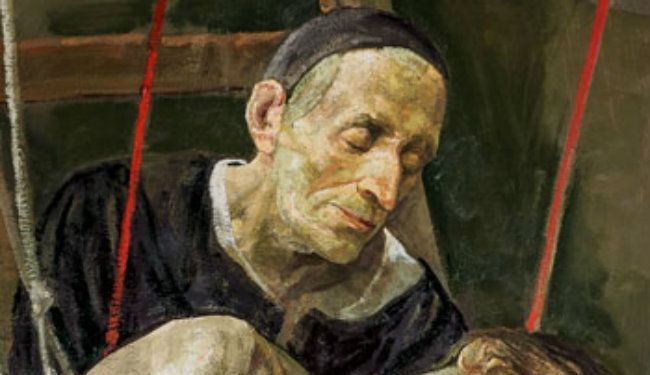
Today we continue our regular series called “Learning from the Saints.” Our guide is expert Bert Ghezzi, a dear friend of mine and the author of numerous books including Voices of the Saints, Saints at Heart, and Discover Christ: Developing a Personal Relationship with Jesus.
His more recent books are The Power of Daily Mass and The Heart of Catholicism. You can learn more about Bert and his work at BertGhezzi.com.
Today, Bert profiles St. Joseph Pignatelli, whose feast day is today.

I am ambivalent toward obedience. Maybe you are, too. I have always liked obedience when my children did what they were told. But I often find the virtue prickly and hard-to-take when I am expected to obey. But obedience even in the worst circumstances may bear good fruit, as the life of Joseph Pignatelli demonstrates.
Shortly after Joseph Pignatelli was ordained as a Jesuit priest, Charles III expelled the society from Spain. With the community already repressed in Portugal and France, some Jesuits found temporary refuge in Corsica, until the French drove them out. Pignatelli helped to arrange a center for them at Ferrara.
In 1773, Pope Clement XIV yielded to political pressure and suppressed the Jesuits entirely. When the vicar general of the order asked the men at Ferrara whether they would obey, they said, “yes, willingly.” The result was to secularize Father Pignatelli and 23,000 other religious.
For twenty years, Fr. Pignatelli devoted himself to study and aiding other Jesuits. However, in the 1790s the tide began to turn. The Duke of Parma invited three Jesuits to establish themselves there. With the pope’s permission, Pignatelli established a novitiate at Colorno, sending men for training to Russia, where the government had not promulgated the suppression. After 1804, under the most difficult conditions, Pignatelli became provincial for Naples. Then, after the French drove out the Jesuits from Naples, provincial at Rome for all Italy.
In these very straightened circumstances, Pignatelli apparently had the help of divine intervention. Miracles seemed to accompany him, like the following described by an archbishop during his canonization process:
“I called at St. Pantaleon’s to confer with the provincial on business. I was seated at the side of his small desk, with not more than a foot between us. The procurator came in and said he needed immediately a certain sum of money. The provincial opened the top desk drawer where I saw right under my eyes a loose assortment of money. He gave the procurator the entire amount, which left the drawer empty.
“The procurator came right back, saying that he was still short of funds. I wish to emphasize the position I was in at the time. I was as close to the desk drawer as he was himself. My view of the interior was unobstructed. Then I witnessed a prodigy that I shall never forget. The saint paused momentarily. He seemed to withdraw from us, entering into himself and forgetting our presence.
“After a brief thought, he raised his eyes upward and moved his lips. I shall always remember the serene smile that lighted his face at that moment. Had he been in communion with the Invisible? I don’t know. But I watched him open the drawer he had just emptied. There in the identical location as before was, for all appearances, the same money he had already given to the procurator. The thing was so manifestly supernatural and I was so struck with wonder, that I cried out: ‘A miracle!’ At my shout, the holy man humbly bowed his head. The he abruptly turned to the subject of our interrupted conference.”
During the French occupation of Italy in the first decade of the 1800s, Fr. Pignatelli worked quietly to conserve the reorganization of the Jesuits he had achieved. He deserves recognition as the restorer of the Jesuits, even though the full restoration of the society did not occur until 1814, three years after his death. Pope Pius XII canonized him in 1954.
“The cross represents the inversion of all human values. The human is put to death and out of the death comes life.”
— John Courtney Murray
Read more from Bert at his website www.BertGhezzi.com, or check out his many books on Amazon.
